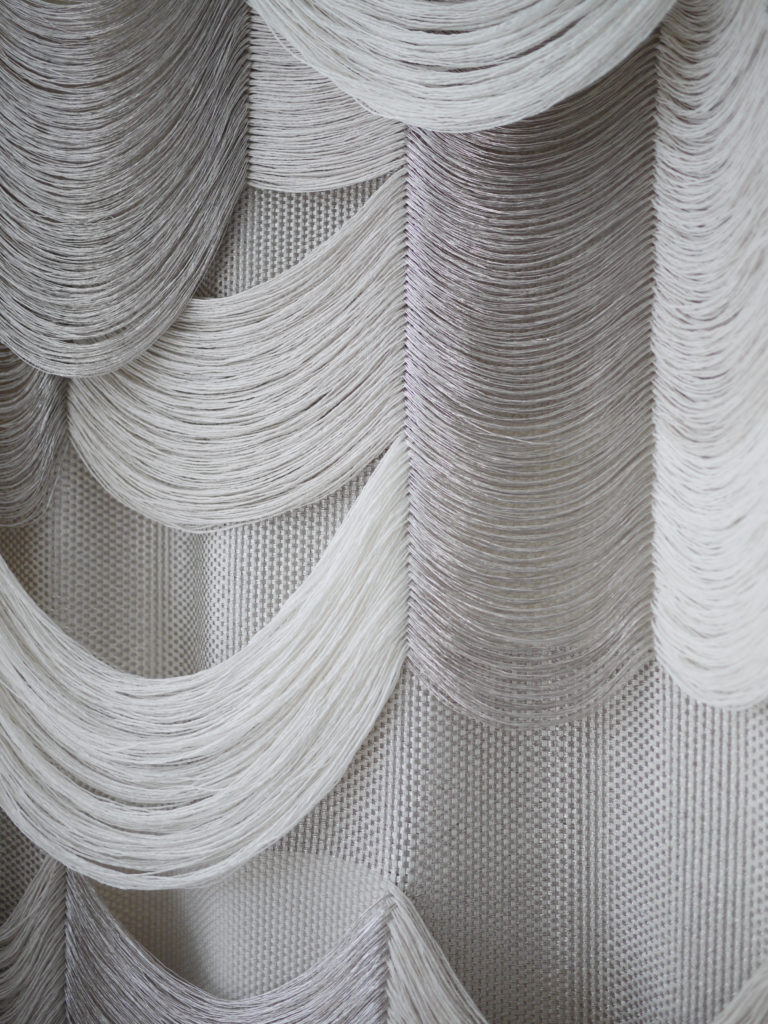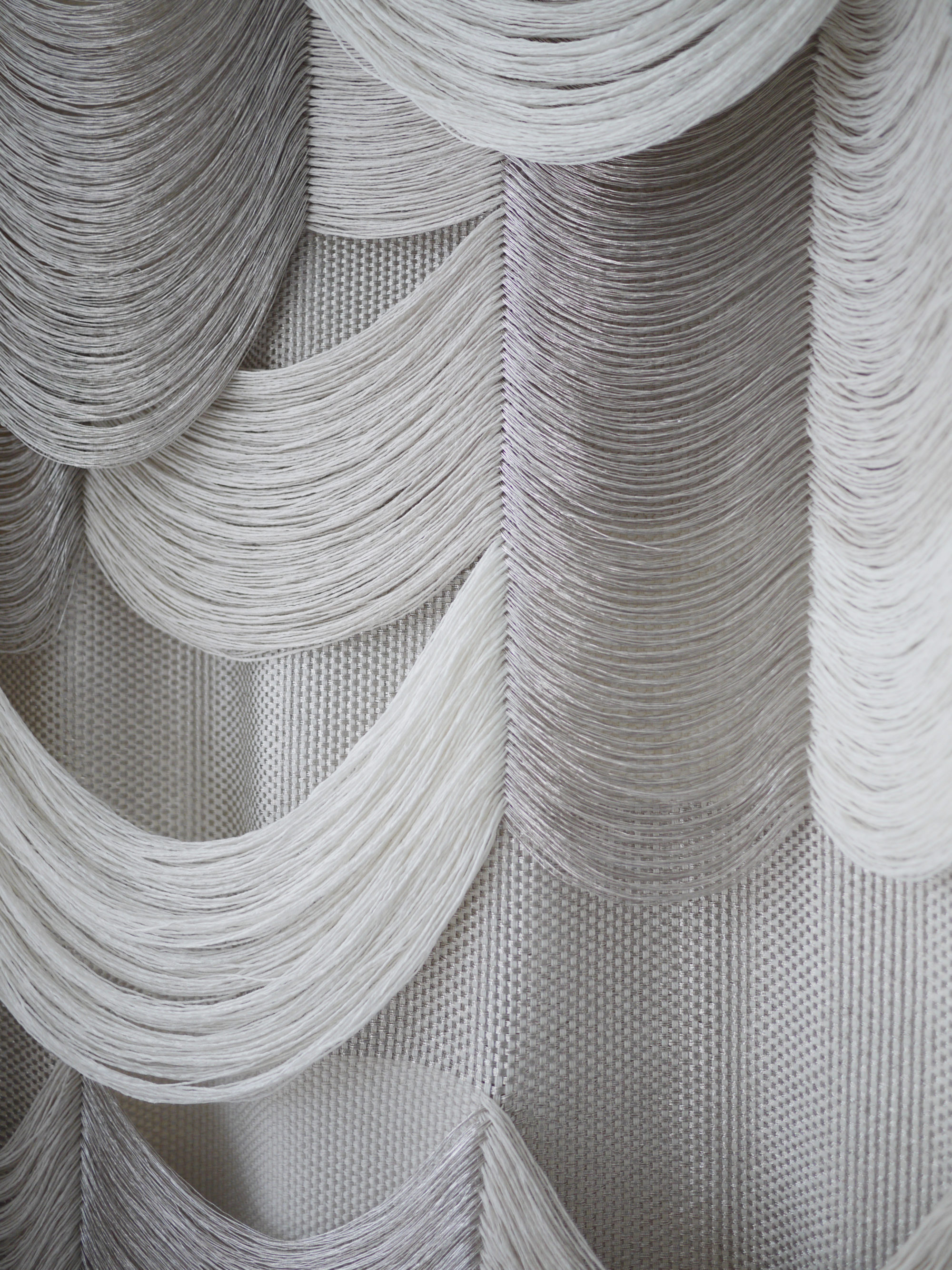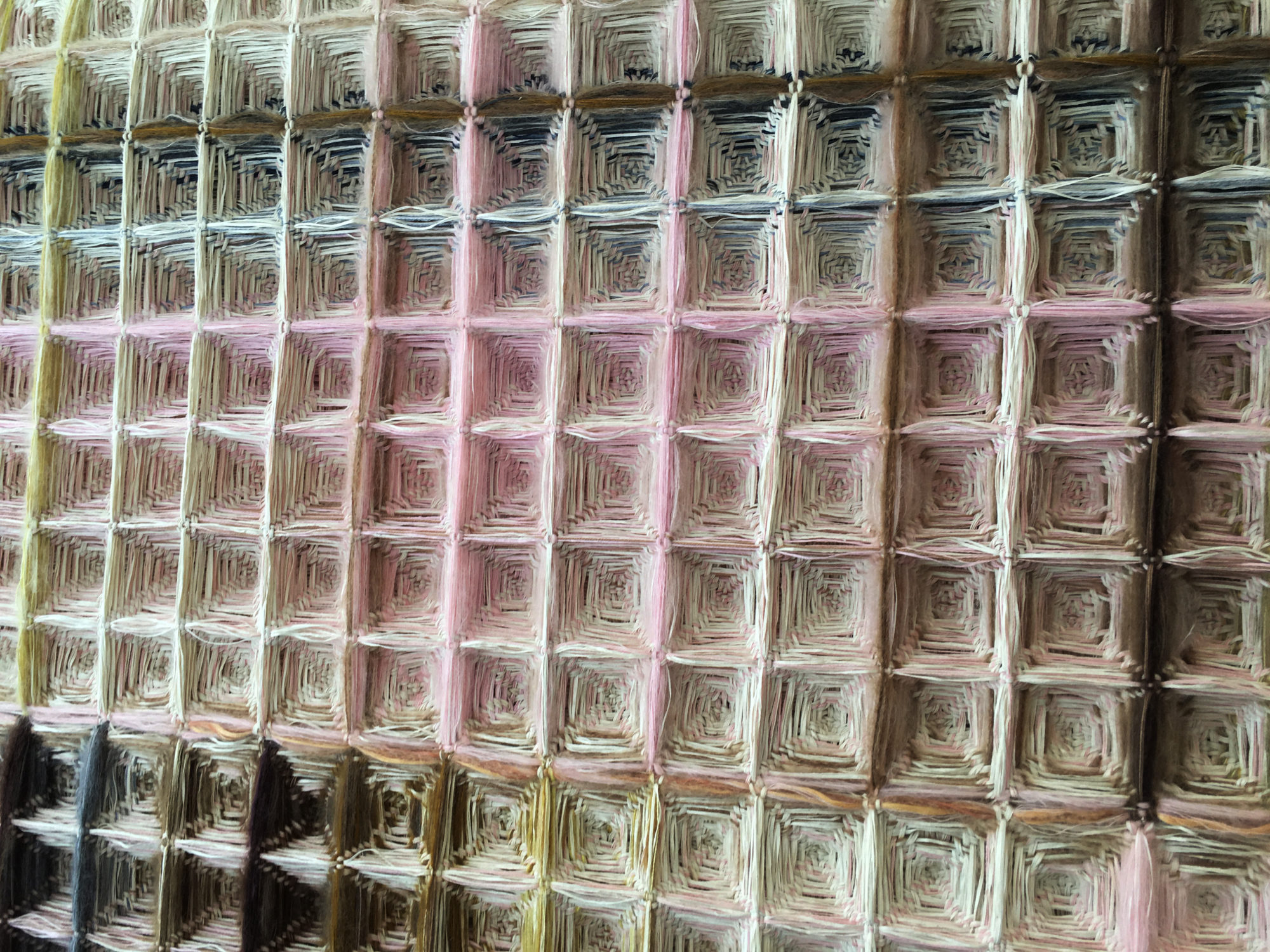Every day we ask a designer to take a selfie and give us an inside look at their lives.
Age: ?
Occupation: Textile designer and artist
Hometown: Tokyo
Studio location: Gowanus, Brooklyn
Describe what you make: I make textile artworks for exhibition and commission, and textile designs for architectural installation in site-specific projects. My work is mostly woven-based.
The most important thing you’ve designed to date: This is a difficult question. I always try to put a hundred percent of my self into each work and each project, so they are, in some ways, all important to me.
All of my work starts on the handloom in my studio. I weave large-scale artworks there and also collaborate with mills, especially on design projects with a high volume of yardage. It is very important for me to keep the legacy of the hand, even if work is manufactured in the mill. So one of the challenges is designing the work so it is possible for a mill to manufacture it at the quantity and scale needed for a project.
One example is an important project that involved a combination of weaving and macramé, which is very different than weaving. I developed a technique in the studio and then needed to pass on the technique to the mill. This type of transfer is an important part of the work. I enjoy collaborating with craftspeople and specialists all over the world.
The problem your work solves: To keep the legacy of the hand even if something is manufactured at a mill. Another problem—which for me is not really a problem but the beauty of the process and work—is to experiment with the capacity of woven structures and materials to convey what I am trying to express through the work.
What you are working on now: One of the projects I am working on is an artwork composed of four hanging panels commissioned by Richard Meier. It is for a public space in a residential tower in Taipei designed by the firm. The work will be installed in February 2018, when the building is completed.
A new or forthcoming project we should know about: I am preparing for an exhibition in Japan called “Hand Memory” (running from October 6 to 20 at the gallery Artheque at Tama Art University in Tokyo). This project involves revitalizing bast fiber materials that have been little-used or forgotten in Japan. I am collaborating on this with a bast fiber research and development team in Japan. My pieces woven with the bast fiber kuzu will be exhibited.
What you absolutely have to have in your studio: A lot of materials, different fibers, and yarn sizes.
All tools, including the looms, maintained in good condition.
An inspiration board, with materials in my mind for a new piece. Also sketches and images.
My radio. I often listen to WNYC, listening to what’s going on in the world.
I also need a clean floor! I keep the tradition of taking off shoes in the studio. And we also wipe the floor with a wet cloth like kids do in primary school in Asia.
I sometimes need to be alone in the studio too.
What you do when you’re not working: Wondering.
Sources of creative envy: I don’t feel envy. These are some people whose work I greatly admire and respect:
Magdalena Abakanowicz: Her work is so powerful! I get power when I see her work.
Sōetsu Yanagi: He is one of the founders of the Japanese folk craft movement, the Mingei Movenment (and also the father of Sori Yanagi, a famous product designer). I like his way of thinking and legacy.
Jack Lenor Larsen: He is a textile legend and was my boss when I was at the Larsen studio. I respect what he accomplished, especially how he trained local artisans in countries around the world and helped introduce handcraft to manufacturing.
Mamma Andersson: She is a contemporary Swedish painter who absorbs and captures the moment-ness of everyday life and translates it to her paintings. I really like her sense of composition and color and her point of view.
Comme des Garçons: Ever since I was teenager, I’ve liked what they’ve shown to the world—their point of view. I have several outfits from the house, which I have been wearing more than twenty years. I like their bold design, with great pattern-cutting and craftsmanship behind their work.
The distraction you want to eliminate: Fear of my entire studio building in Gowanus (not far from the canal) going under water after heavy rain!
Concrete or marble? I would use both! All materials have great potential and I like contrast. It’s not about being precious or non-precious. How you compose is the key.
High-rise or townhouse? I like being close to the ground. A townhouse with a deck and backyard with trees (and views) would be my choice.
Aliens or ghosts? I like E.T., but the ghost-tale film Ugestsu (Mizoguchi) is also great.
Remember or forget? Memorable things stay. Unnecessary things fade. If it’s unnecessary, I prefer to forget.
Dark or light? I like deep colors, but also natural light.



